Lisbon, the capital of Portugal, is known for its vibrant street art scene. The city is a haven for artists, who use its walls as their canvas to create colorful and thought-provoking works of art. Walking through the streets of Lisbon, one can’t help but be captivated by the stunning murals and graffiti that adorn its buildings.
From intricate portraits to abstract designs, the street art in Lisbon offers a glimpse into the city’s rich cultural heritage and its vibrant contemporary art scene. The art reflects the diversity and creativity of the local artists, who draw inspiration from various sources, including history, politics, and popular culture.
One of the most famous neighborhoods for street art in Lisbon is Bairro Alto. This bohemian district is filled with narrow streets and old buildings that provide the perfect backdrop for the artists’ creations. The walls of Bairro Alto are covered in vibrant murals and graffiti, each telling its own unique story and leaving a lasting impression on the passersby.
Exploring the street art in Lisbon is like embarking on a journey through the city’s past, present, and future. It allows visitors to connect with the local culture and gain a deeper understanding of the issues that matter to the people of Lisbon. The colorful and expressive art is not just a form of decoration, but a powerful means of communication and expression for the artists and the community at large.
Lisbon’s colorful street art scene is not only a visual feast for the eyes, but also a vibrant display of the city’s rich cultural heritage. From the narrow alleys of the historic neighborhoods to the more modern districts, the streets of Lisbon are adorned with a plethora of artistic expressions.
Walking through the city, one can’t help but be captivated by the bold, vibrant colors that dominate the walls. Each piece of street art tells a story, reflecting the diverse cultural influences that have shaped Lisbon over the years.
One notable aspect of Lisbon’s street art is its representation of local traditions and customs. Many artists draw inspiration from Portugal’s history, folklore, and traditions, showcasing them in intricate and visually striking murals. These works of art not only beautify the city’s streets but also serve as a reminder of the importance of preserving cultural heritage.
A Canvas of Creativity
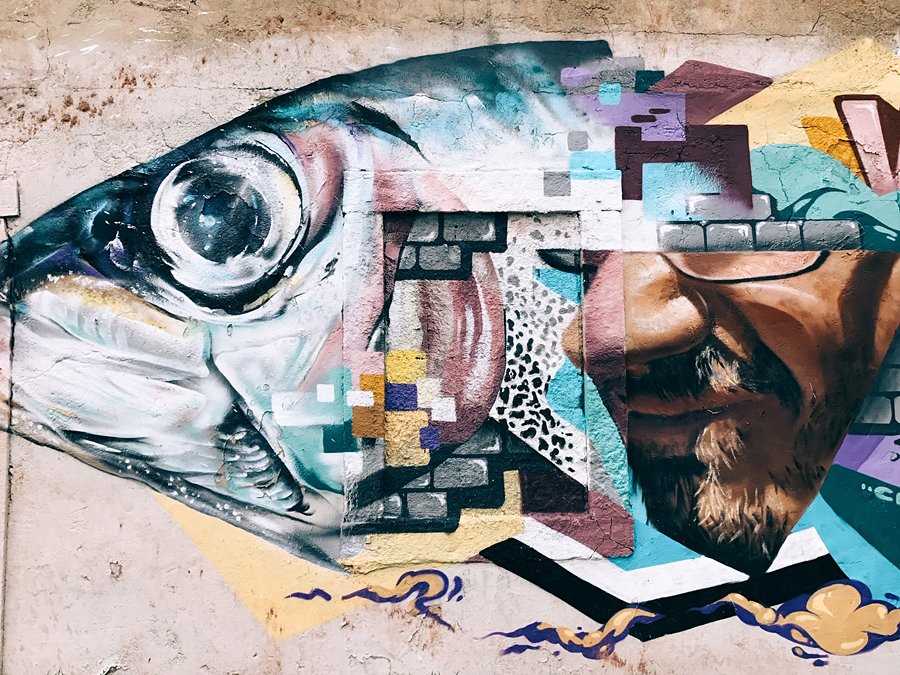
The streets of Lisbon serve as a canvas for artists from all walks of life. Whether it’s a local artist expressing their personal vision or an internationally renowned muralist leaving their mark, the city’s walls offer a platform for creative expression.
From large-scale murals to small, hidden gems waiting to be discovered, there is art to be found around every corner. The sheer variety of styles and techniques used by the artists adds to the vibrant tapestry of Lisbon’s street art scene.
Diversity and Inclusion
The street art in Lisbon also reflects the city’s commitment to diversity and inclusion. Many artists use their work as a means of addressing social and political issues, giving a voice to marginalized communities. These thought-provoking pieces not only add depth to the city’s art scene but also serve as a platform for dialogue and reflection.
A Must-See for Art Lovers
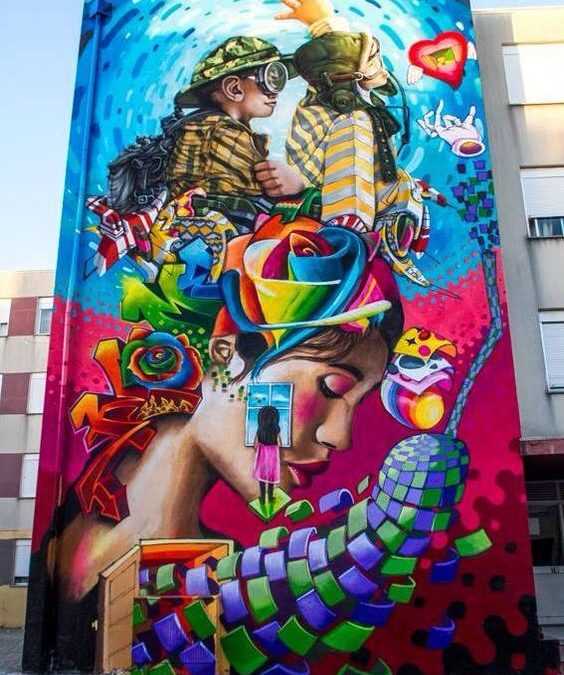
If you’re an art lover, a stroll through Lisbon’s streets is a must. The city’s vibrant street art scene offers a unique opportunity to explore and appreciate a wide range of artistic styles and expressions. From the traditional to the avant-garde, there is something to suit every artistic taste.
So next time you find yourself in Lisbon, take the time to immerse yourself in the vibrant display of culture that is the city’s street art. You won’t be disappointed.
The Streets of Lisbon as a Canvas
In the colorful streets of Lisbon, art comes alive on every corner and building facade. The city is transformed into a vibrant canvas, where street artists use their creativity to capture the essence of Lisbon’s culture and history.
Walking through the narrow alleyways and wide boulevards, one can’t help but be mesmerized by the striking displays of street art. From intricate murals to playful graffiti, each artwork tells a unique story and adds personality to the city’s urban landscape.
The street art scene in Lisbon is diverse and eclectic, with artists from all over the world leaving their mark on the city’s walls. From established artists to up-and-coming talents, there is something for everyone to appreciate and admire.
The Power of Street Art
Street art has the power to engage and connect with people in a way that traditional art forms may struggle to achieve. By transforming public spaces into open-air galleries, street artists have the ability to spark conversations, provoke thoughts, and foster a sense of community among residents and visitors alike.
Through their artwork, street artists often address social and political issues, shed light on local culture and heritage, and express their personal emotions and experiences. Their works become a form of self-expression, a way to leave a lasting impression on the city and its inhabitants.
Preserving Street Art in Lisbon
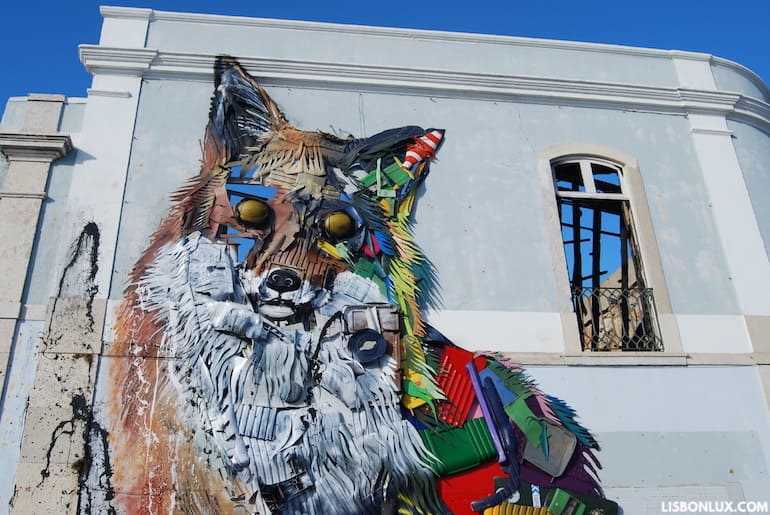
While street art is an ephemeral form of expression, the city of Lisbon has taken steps to preserve and protect these vibrant artworks. The Lisbon Municipal Council has implemented initiatives to protect significant pieces of street art, ensuring their longevity and cultural value.
Art enthusiasts and visitors can take part in guided tours that showcase the best street art in the city, allowing them to gain a deeper understanding of the stories behind the artworks and the artists who created them. These tours provide an opportunity to appreciate the artistic beauty of Lisbon’s streets while also supporting the local art community.
Exploring the Urban Art Scene
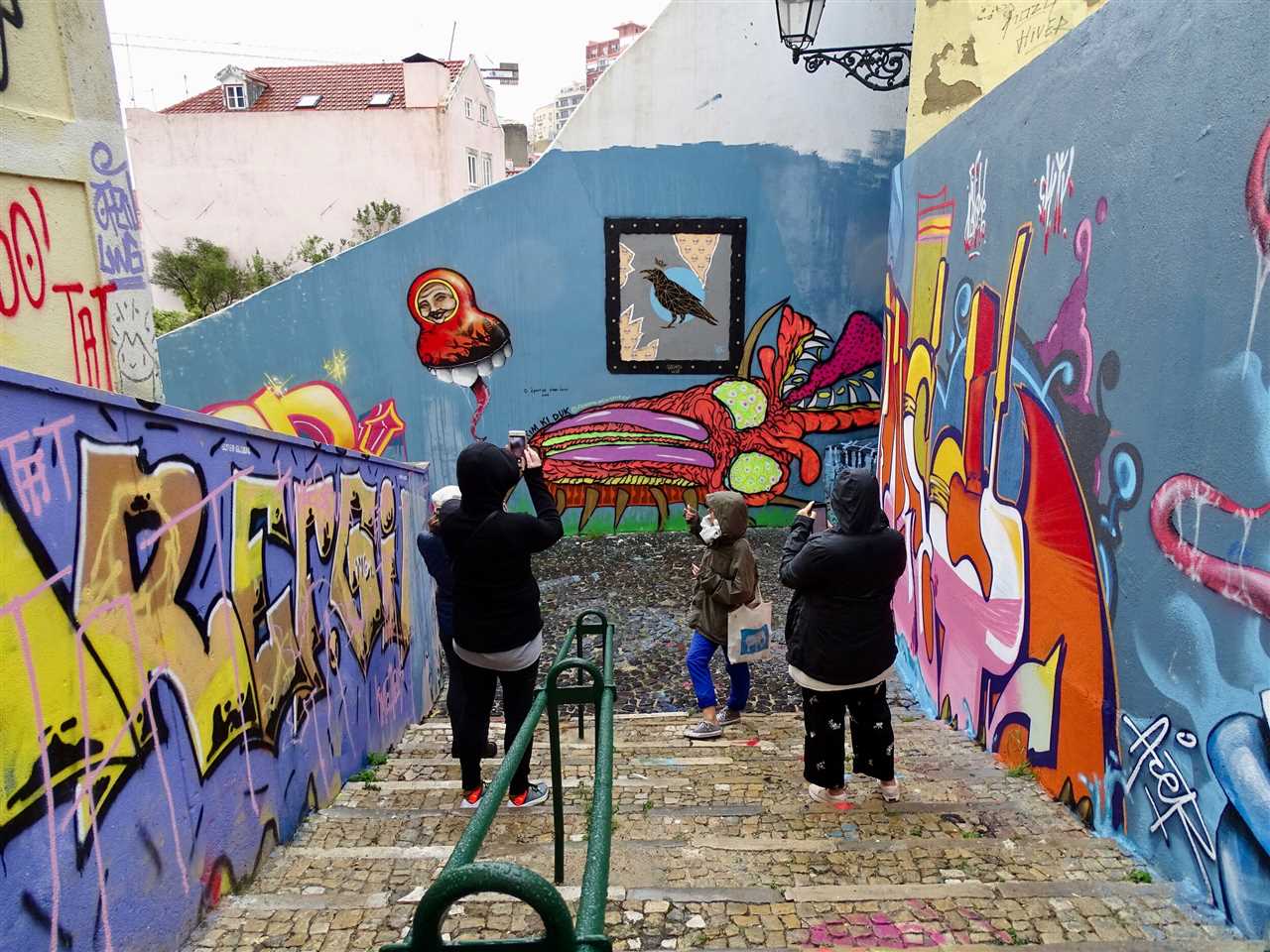
Lisbon’s urban art scene is a vibrant and colorful representation of the city’s creative spirit. The streets of the Portuguese capital are adorned with stunning murals and graffiti that showcase the talent and imagination of the local artists.
Exploring the urban art scene in Lisbon is like embarking on a visual journey through the city’s rich cultural history. The art not only adds a burst of color to the streets, but it also tells stories of the city’s past, present, and future.
One of the best ways to experience Lisbon’s urban art scene is by taking a street art tour. These guided tours not only introduce visitors to some of the most famous street art pieces in the city, but they also provide insights into the artists and their creative processes.
A highlight of any street art tour is visiting the iconic Bairro Alto neighborhood. This bohemian district is home to some of the most impressive artworks in Lisbon. The narrow streets and historic buildings serve as the perfect canvas for vibrant murals that depict a range of subjects, from political statements to cultural symbols.
Another must-visit area for urban art enthusiasts is the LX Factory. This former industrial complex has been transformed into a creative hub, with street art covering its walls and buildings. The eclectic mix of artwork reflects the diverse artistic community that calls LX Factory home.
But the urban art scene in Lisbon doesn’t just stop at the murals and graffiti on the streets. The city is also home to a number of art galleries and museums that showcase urban art exhibitions. These spaces provide a deeper understanding of the artists and their work, and offer an opportunity to purchase unique pieces of urban art.
Whether you’re a street art aficionado or simply appreciate the beauty of public art, exploring Lisbon’s urban art scene is an unforgettable experience. From the colorful murals on the streets to the galleries that showcase urban art, there’s something for everyone to enjoy in this vibrant and creative city.
The Influence of Graffiti
Graffiti has a long history and a significant influence on various aspects of culture and society. Originally considered vandalism, graffiti has evolved into a respected art form, inspiring and challenging traditional notions of beauty and creativity.
Artistic Expression and Self-Identity
Graffiti allows individuals to express their artistic talents and showcase their unique perspectives. Through innovative use of color, line, and form, graffiti artists create visually striking pieces that reflect their thoughts, feelings, and beliefs. Many graffiti artists use their work to address social and political issues, giving a voice to marginalized communities and challenging the status quo.
Aesthetics and Urban Revitalization
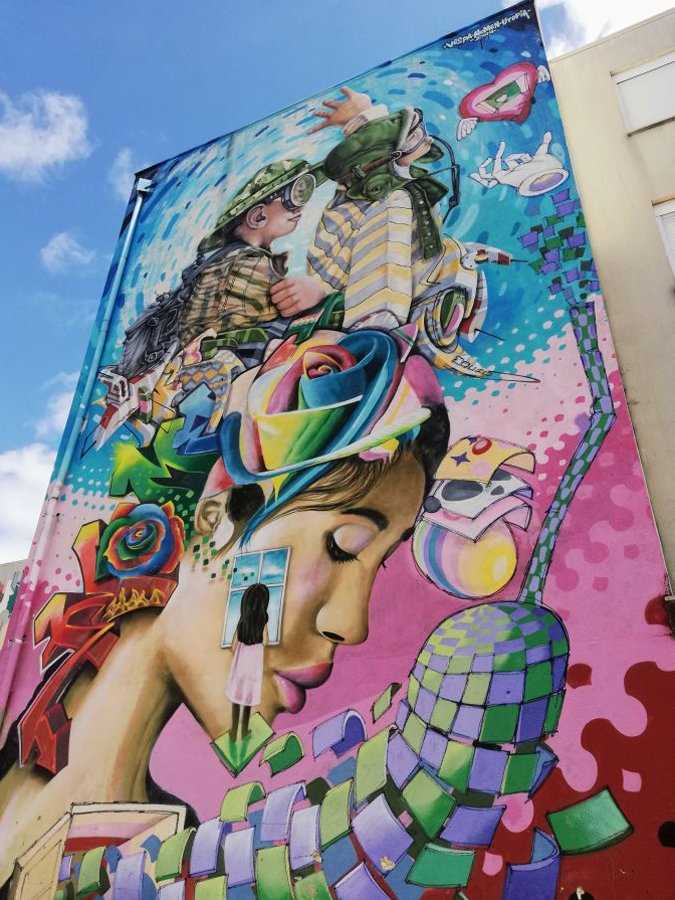
Colorful graffiti murals can transform dull and neglected areas into vibrant, engaging spaces. Street art has been successful in revitalizing urban neighborhoods, attracting tourism, and stimulating economic growth. It adds character and charm to cities, making them more visually appealing and attracting visitors from all over the world.
However, it is important to note that not all graffiti is legal or welcome. Tagging, which involves quickly writing one’s name or signature, is often seen as a disrespectful act of vandalism. It defaces public property and detracts from the overall aesthetics of a neighborhood. While graffiti as an artistic form can contribute positively to a community, it is crucial for artists to work within local regulations and obtain permission to ensure their contributions are appreciated and respected.
Understanding the City’s Artistic Identity
Lisbon, the vibrant capital city of Portugal, is known for its rich artistic heritage. The city’s streets are adorned with colorful street art that adds a unique charm to its already stunning architecture. The street art in Lisbon reflects the city’s artistic identity and serves as a visual representation of its cultural diversity and creativity.
One of the key aspects of Lisbon’s artistic identity is its ability to blend traditional and contemporary art forms. The city is home to a mix of classical art museums, such as the Museu Nacional de Arte Antiga, and modern art galleries that showcase contemporary works. This fusion of old and new art contributes to Lisbon’s artistic identity and attracts artists and art enthusiasts from around the world.
The street art scene in Lisbon is incredibly diverse and offers a variety of styles, from graffiti to large-scale murals. Artists from all over the world contribute to the street art scene, bringing their unique perspectives and techniques. This eclectic mix of styles creates an ever-evolving artistic landscape that sets Lisbon apart from other cities.
Another defining aspect of Lisbon’s artistic identity is its strong connection to its history and culture. Many of the street art pieces in Lisbon pay homage to the city’s past, featuring historical figures and landmarks. This integration of history into contemporary art not only adds depth and meaning to the artworks but also strengthens the city’s cultural identity.
Lisbon’s artistic identity is not limited to its streets; it extends to its vibrant art festivals and events. The city hosts numerous cultural events throughout the year, including art exhibitions, music festivals, and street performances. These events bring artists and enthusiasts together, fostering a sense of community and further enriching Lisbon’s artistic identity.
Famous Street Artists of Lisbon
Lisbon is home to a vibrant street art scene, attracting artists from all over the world. Here are some of the famous street artists in Lisbon:
- PANTÓNIO: PANTÓNIO is a renowned street artist from Portugal known for his signature blue and black murals featuring animals and human figures. His dynamic and fluid style adds a touch of movement and elegance to the streets of Lisbon.
- Nomen: Nomen is a graffiti artist who has been active in the Lisbon street art scene since the 1980s. His vibrant and colorful murals evoke a sense of energy and playfulness, bringing life to the city’s walls.
- The Caver: The Caver is a street artist known for his large-scale murals featuring humorous and imaginative characters. His vibrant and playful artworks can be spotted in various neighborhoods in Lisbon, brightening up the urban landscape.
These are just a few of the many talented street artists who have left their mark on the walls of Lisbon. Exploring the city’s streets, you never know what colorful and captivating artwork you might come across!
The Evolution of Street Art in the City
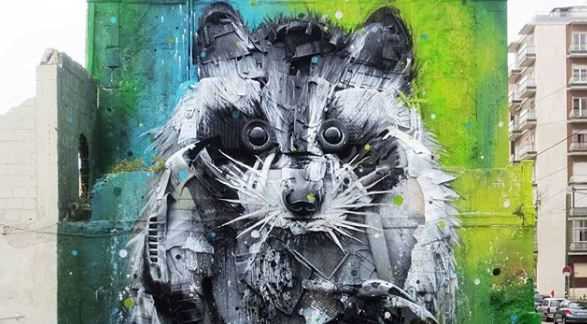
Street art has long been a vibrant form of expression in the city of Lisbon. Over the years, it has evolved and transformed, becoming an integral part of the urban landscape. From humble beginnings as simple graffiti tags, street art has grown into a highly respected art form, recognized and celebrated around the world.
In the early days, street art in Lisbon was often viewed with disdain and seen as a form of vandalism. However, as the art form has evolved, so too has public opinion. Today, many consider street art to be an important cultural and artistic movement that adds character and beauty to the city.
The evolution of street art in Lisbon can be seen in the changing styles and techniques used by artists. While traditional graffiti tags are still prevalent, street art has taken on many forms, including stencils, murals, and installations. The use of vibrant colors and intricate designs has become a trademark of the city’s street art scene.
The Rise of Street Art Festivals
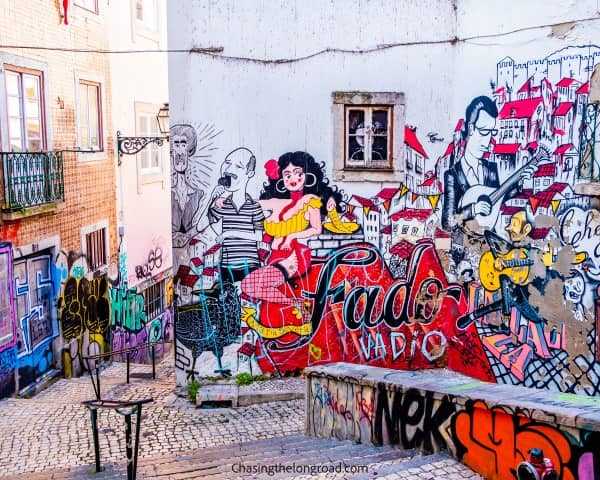
One major factor in the evolution of street art in Lisbon has been the rise of street art festivals. These events bring together local and international artists, providing them with a platform to showcase their work. Festivals such as the Lisbon Street Art Festival and Underdogs Festival have helped to legitimize street art and foster a sense of community among artists.
The Intersection of Street Art and Tourism
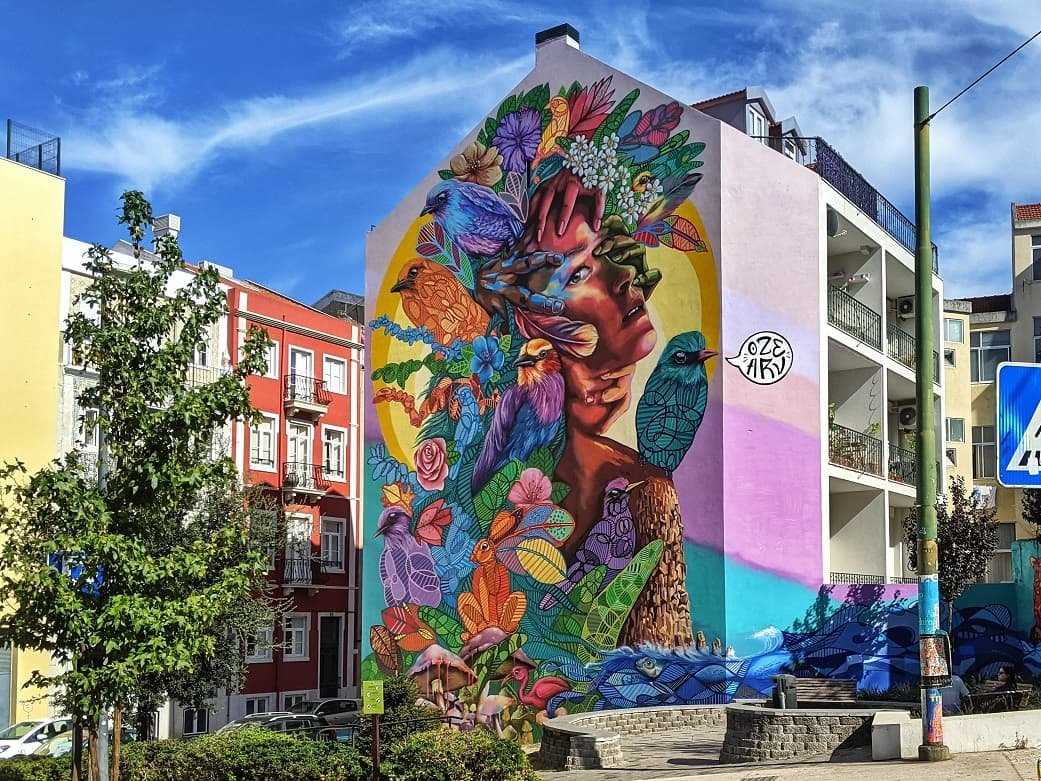
In recent years, street art has become a major draw for tourists visiting Lisbon. The city’s colorful and vibrant street art scene has become a popular attraction, with tourists flocking to see the murals and installations that have transformed neighborhoods and public spaces. This intersection of street art and tourism has provided artists with more opportunities to showcase their work and has further contributed to the evolution of the art form.
Local Community Engagement
To create vibrant and meaningful street art in Lisbon, local artists and the community have come together to engage in collaborative projects. These projects allow for a sense of ownership and pride in the art created, as well as fostering a strong connection between the artists and the neighborhood.
One way the local community is engaged in street art is through mural painting workshops. These workshops provide an opportunity for community members of all ages and skill levels to learn about street art techniques and contribute to the creation of a mural. This allows for a shared sense of creativity and allows community members to leave their mark on their neighborhood.
Additionally, local artists often collaborate with community organizations and initiatives to create murals that reflect the unique identity and character of the neighborhood. These collaborations can involve working with local schools, community centers, or neighborhood associations to gather input and inspiration for the artwork. By involving the local community in the creation process, the street art becomes a reflection of the people and their stories.
Furthermore, street art festivals and events in Lisbon often involve the local community in the form of live painting demonstrations and interactive art installations. These events create a festive atmosphere and allow community members to witness the creation of art firsthand. This direct engagement helps to build a sense of appreciation and understanding for street art within the local community.
Overall, local community engagement plays a vital role in the creation and appreciation of the colorful street art in Lisbon. By involving the community in the artistic process and creating opportunities for collaboration, the art becomes more meaningful and representative of the people and the neighborhoods it adorns.
Preserving and Protecting Street Art
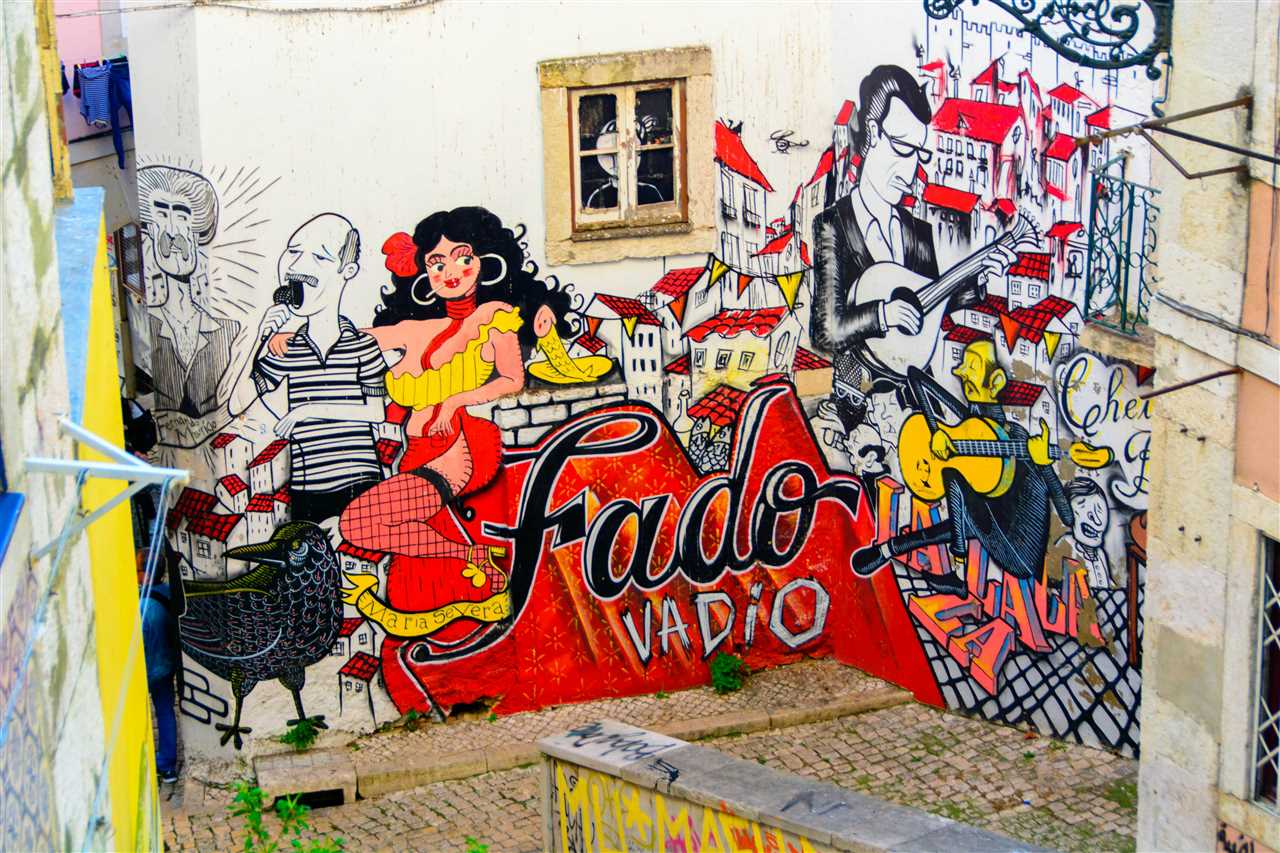
Street art has become an integral part of cultural expression in cities around the world, including Lisbon. Its vibrant and often thought-provoking pieces bring life and creativity to the streets, engaging with both locals and tourists alike. However, street art is also vulnerable to damage, vandalism, and removal.
Promoting Cultural Heritage
Preserving street art is important in order to protect and promote cultural heritage. Many of these artworks reflect the history, identity, and stories of a community. By preserving them, we ensure that future generations can appreciate and learn from these valuable expressions of art. Governments and local authorities should work together with artists and art organizations to establish policies and regulations that protect street art.
Supporting Conservation Efforts
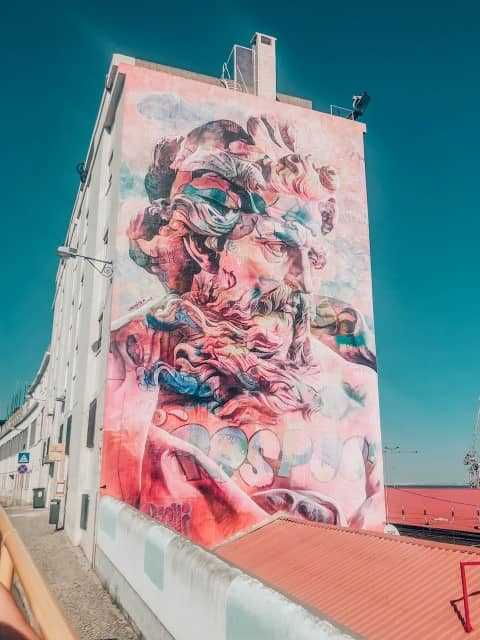
Conservation plays a crucial role in preserving street art. Artists often use different materials and techniques that require specific care and maintenance. Regular cleaning, restoration, and protection against weather conditions are essential to ensure the longevity of these artworks. Additionally, promoting ethical tourism practices can help minimize the negative impact on street art, such as by discouraging graffiti or tagging on existing pieces.
Finding Inspiration in Lisbon’s Street Art
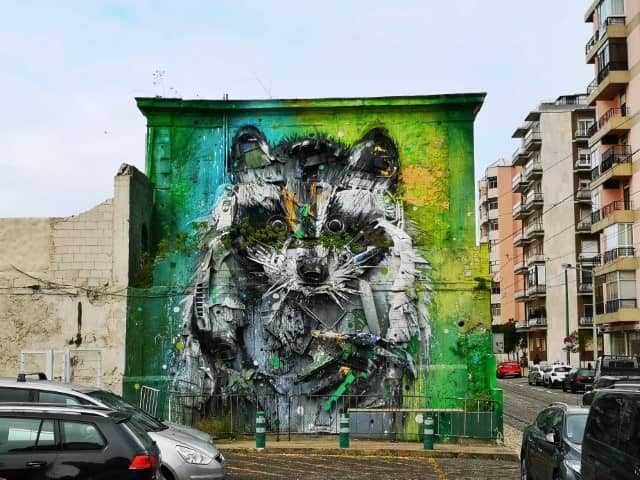
Lisbon’s vibrant street art scene is a treasure trove of creativity and inspiration. Walking through the city’s colorful streets, you can’t help but be captivated by the stunning murals and graffiti that adorn the walls. Each piece tells a story, conveying powerful messages and sparking emotions.
One of the reasons why Lisbon’s street art is so inspiring is its diversity. From large-scale murals to intricate stencils, there’s something for everyone. The artists behind these works come from all walks of life, using different techniques and styles to express their ideas. This fusion of creativity creates a rich tapestry of art that is both visually stunning and thought-provoking.
Another source of inspiration is the thematic diversity of Lisbon’s street art. Each mural or graffiti piece explores a different subject, from political issues to social commentary. Some pieces are whimsical and lighthearted, while others tackle more serious topics. This diversity allows viewers to engage with the art on a personal level, finding inspiration in the messages that resonate with them.
One of the most inspiring aspects of Lisbon’s street art scene is the sense of community it fosters. Many of these artworks are created collaboratively, with local artists and international talents coming together to transform public spaces. This collaboration not only adds layers of creativity but also serves as a testament to the power of art in uniting people and sparking conversations.
Whether you’re an artist yourself or simply an admirer of art, Lisbon’s street art is sure to inspire. It encourages us to think beyond the confines of traditional art galleries and find beauty and inspiration in unexpected places. So next time you find yourself in Lisbon, take a stroll through its vibrant streets and let the art ignite your creativity.

I am a mural enthusiast and a fervent admirer of street art. Rather than creating murals myself, I am passionate about collecting them. My love for street art knows no bounds. I am dedicated to curating and cherishing these artworks that grace the streets. My collection stands as a testament to my profound appreciation for this form of artistic expression.
read about me




